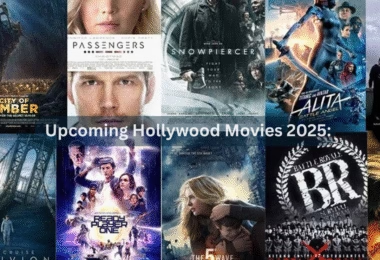The world of entertainment has been transformed greatly in recent years due to the evolution of streaming services such as Netflix. The traditional television model is long gone, replaced now by the on-demand access we have to movies and shows through these new platforms. As streaming continues to dominate, its enormous impact on the entertainment industry is clear. This piece explores how streaming has evolved, focusing particularly on Netflix’s redefining of content consumption.
The Dawn of Streaming: A Revolutionary Time for Entertainment
Streaming technology revolutionized how we access media. Early streaming’s genesis was in the late 1990s and early 2000s, though widespread adoption needed greater internet speeds. When Netflix ventured into online streaming in 2007, offering subscribers growing film and television libraries, a new era began.
Before streaming, cable and physical media like DVDs were how most people watched content. Viewers had little control over what or when to watch. But streaming platforms upended this by empowering consumers to choose shows and movies, as well as devices and times, to watch at will. This freedom of selection was a game-changing innovation far beyond what old models provided.
The Revolution of Streaming: Netflix Leads the Way into the Future
Netflix rapidly became the dominant force in the streaming world. By 2011, it had attracted millions of subscribers solely within the United States. The company’s decision to invest heavily in original programming further cemented its position as an industry pioneer. Groundbreaking shows like House of Cards and Orange Is the New Black could only be watched through Netflix, offering audiences high-quality content.
The success of Netflix prompted other corporations to enter the revolution of streaming arena. Amazon Prime Video, Hulu, and Disney+ are just a few platforms that emerged, following in Netflix’s innovative footsteps. As more players joined the fray, competition intensified, resulting in an explosion of content across diverse genres. Viewers benefited from this bounty of choices.
The Shift to On-Demand Consumption Reshaped Television Forever
One of the most significant changes brought about by streaming services was the transition from traditional cable to on-demand viewing. Audiences no longer felt beholden to networks’ schedules, able to watch their favorite shows whenever suited them instead of waiting for time slots. This evolution in user behavior fundamentally converted how television networks function.
With streaming, people gained control, no longer forced to sit through commercials or adhere to air dates. Entire seasons could be binged at leisure, and new shows explored on a whim. This paradigm shift not only empowered viewers but compelled networks and production companies to adapt their approaches to an on-demand world’s demands.
Binge-Watching: The New Entertainment Norm

The rise of streaming media has ushered in drastic changes to how audiences consume content. Platforms like Netflix have fully embraced binge-watching by releasing entire seasons at once, allowing viewers to selectively watch episodes at their own pace without commercials or the suspense of weekly installments. Writers have adjusted crafting shows to maximize bingeability, with plotlines engineered for nonstop viewing and episodic durations optimized for marathon sessions. Top tier programs result from this innovative model, their immersive stories and cliffhangers compeling dedication from pilot to finale.
As streaming flourishes, traditional television grapples with declining numbers. Industry projections foresee over half of American households cutting cable by 2023 due to preference for on-demand entertainment through streaming services. Equally, the film industry suffers alteration, with streaming outlets developing as major suppliers along with theaters. Original movies from Netflix, Amazon and Hulu now bypass conventional distribution channels, narrowing the gap between streaming and cinema.
The entertainment landscape continually evolves with technology. Though established formats resist change, creative disruption spawns new norms. Streaming platforms empower audiences and artists alike, cultivating unique works and viewing behaviors that push the industry toward an exciting future.
Streaming Services versus Traditional Movie Theaters
Streaming platforms have revolutionized how audiences watch films. In the past, a movie’s viable achievement was merely measured by box office numbers. However, as streaming services multiply in popularity, viewers now have the choice to watch newly released movies from the comfort of their own homes. This has led to a fundamental shift in how motion pictures are marketed and distributed.
While some filmmakers still opt to premiere their works in theaters, many are now deciding on direct-to-streaming releases. This permits them to achieve a more expansive viewership without shouldering the steep costs tied to theatrical distribution. Netflix, for example, has distributed several high-profile movies without a theatrical run, like The Irishman and Marriage Story, that have gained critical acclaim and significant attention.
The Remarkable Reach of Streaming Across Borders
One of the most impressive aspects of streaming platforms is their worldwide reach. Whereas traditional television networks were often confined by geography, streaming services have the means to transcend boundaries. Netflix, for instance, is accessible in over 190 nations, providing localized content and subtitles in multiple languages. This comprehensive growth has allowed streaming platforms to blow into new marketplaces and fascinate worldwide subscribers.
As streaming continues to broaden its international footprint, it has also led to the rise of content from around the world. Shows like Money Heist (Spain) and Sacred Games (India) have achieved worldwide popularity, demonstrating that high-quality programming can originate from any region. This has unlocked opportunities for filmmakers and creators from varied experiences to stake their stories with a global viewer.
The Rise of Localized Content
While global content dominates streaming services worldwide, there has been a growing demand for content reflecting local cultures. Viewers increasingly want to see shows and films mirroring their own languages, experiences, and traditions. In response, streaming giants have poured resources into original regional productions.
Netflix, for one, has created diverse exclusive titles in various languages, such as La Casa de Papel originating from Spain, the German psychological thriller Dark, and Delhi Crime spotlighting India. Surprisingly, these locally-produced programs have resonated not just domestically but also abroad, demonstrating localized content can connect internationally.
The Future of Streaming: What Lies Ahead?
As the streaming sector evolves, certain patterns will mold its destiny. A significant development involves the rise of interactive material. Platforms like Netflix have experimented with interactive shows, such as the choose-your-own-adventure Black Mirror: Bandersnatch, allowing viewers to influence the narrative through choices. This engaging format promises to revolutionize storytelling by offering immersive, personalized viewing.
Another trend focuses on amplifying content suggestions through artificial intelligence and machine learning. Streaming services analyze usage histories to recommend exhibits tailored to individuals. This customized approach aims to maintain viewer engagement and uncover new content.
The Role of Subscription Models
Subscription-based streaming models are projected to remain the dominant method consumers access content. While free, ad-supported options occur, numerous viewers still choose the ad-free practice that comes with paid subscriptions. Amidst rising competition, streaming platforms will innovate subscriber retention strategies like testing new pricing, stockpiling exclusive programming, and flexible subscription choices.
Conclusion: The Streaming Revolution’s Influence Persists
The ascendance of streaming platforms like Netflix fundamentally reshaped the entertainment sector. From content inauguration and dispersal to how viewers consume media, streaming toppled traditional forms and wide open novel options for creators and fans alike. As the industry progresses dynamically, streaming endures resolutely.
With ever-growing demand for on-demand, high-quality entertainment at our fingertips, streaming platforms will indefinitely sculpt future media. Whether emerging interactive narratives, universal reach of programming, or persistent success of subscription models, streaming propels an evolution transmuting how we engage entertainment. While technology and preferences evolve contingently, one certainty remains—the streaming industry will maintain growth, redefining the landscape indefatigably.








Leave a Comment